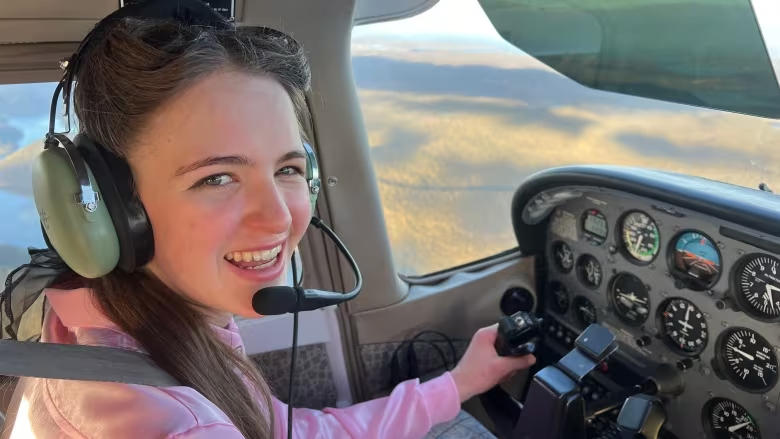Chloe Familton was feeling blessed as she ate her lunch on the tarmac while a group of F-35 military jets took off and landed nearby.
Ms Familton, 18, was making a pit stop at Katherine airport in the Northern Territory, which is connected to one of the country’s most strategically important Royal Australian Air Force bases.
The 40-year-old Cessna 172 she is flying counter-clockwise around Australia may not be quite as advanced as America’s most cutting-edge stealth aircraft.
But to Ms Familton, it is no less special.
Its call sign is November Charlie Oscar, but Ms Familton calls it “November” for short when she’s talking to it.
“I promise I’m not crazy,” she said.
“Even though your aeroplane isn’t a living thing, it’s important, I believe, to almost build this sort of trust and connection with it.”
A young woman stands next to a light aircraft wearing a jacket embroidered with the phrase “fly like a girl”.
Ms Familton would have been on track to be the youngest female pilot to circumnavigate the country in a light aircraft, but northern Australia’s tropical wet season had different plans.
Cutting inland to avoid Tropical Cyclone Jasper meant Ms Familton’s trip was no longer a true coastal circumnavigation. But that has not fazed her.
“It’s so much more than a piece of paper saying that you’re the whatever to do whatever,” she said.
Along with raising money for charity, Ms Familton said her ambition was to challenge outdated thinking about young women in aviation.
History records the Soviet ace Lydia Litvyak as the deadliest woman to command a fighter plane, fighting the Nazis in World War II.
She is one of Ms Familton’s great aviation heroes, symbolising the consequences of underestimating young women.
“Ninety per cent of the people who have heard about this trip have been so supportive and so warm and really eager to see me succeed,” she said.
“But obviously, there are people who hold some views about what teenage girls should be doing and flying planes isn’t one of them.”
Ms Familton said she was irked by a comment directed at her on social media that drew in another of her great historical heroes — pioneering American aviator Amelia Earhart.
A young woman in a denim jacket stands with her hand on the nose of a Cessna light aircraft.
“They said ‘if the world’s most famous female pilot gets herself lost, how is this girl going to be able to get herself around the country’, which particularly annoyed me, because … on the flight where Amelia Earhart went missing, she was flying with a male navigator,” Ms Familton said.
About five per cent of commercial airline pilots are women, globally.
Ms Familton said that was because of a persistent social bias that she hoped to help change.
“It’s often the example of ‘oh, if you’re interested in aviation, there’s an option as a flight attendant’. And I think the actual idea that you can be a pilot is not something that’s presented, so less … women will go into it.
“I think as well, that is very still much that boys club mentality once you get into the industry.”
Her grandfather was an air force navigator and a key inspiration.
Esperance pilot Hayden McDonald has flown around Australia in a bid to stop discrimination against autistic and neurodiverse aviators.
“He learnt to figure out where he was going using maps and compasses and things like that,” Ms Familton said.
“And when I started learning how to fly and doing my own navs, it was the exact same system.”
He even gifted Ms Familton some of his old navigation gear, which she has continued to use.
“You’ve always got in the back of your head that GPS can fail, right? But paper doesn’t,” she said.
Ms Familton said her HSC results would likely arrive in a text message while she was on her way from Katherine to her next stop in Western Australia.
She said she planned to put her phone on “do not disturb” mode. The results could wait.
“It’s quite calming sometimes to be up there … on my own,” she said.











